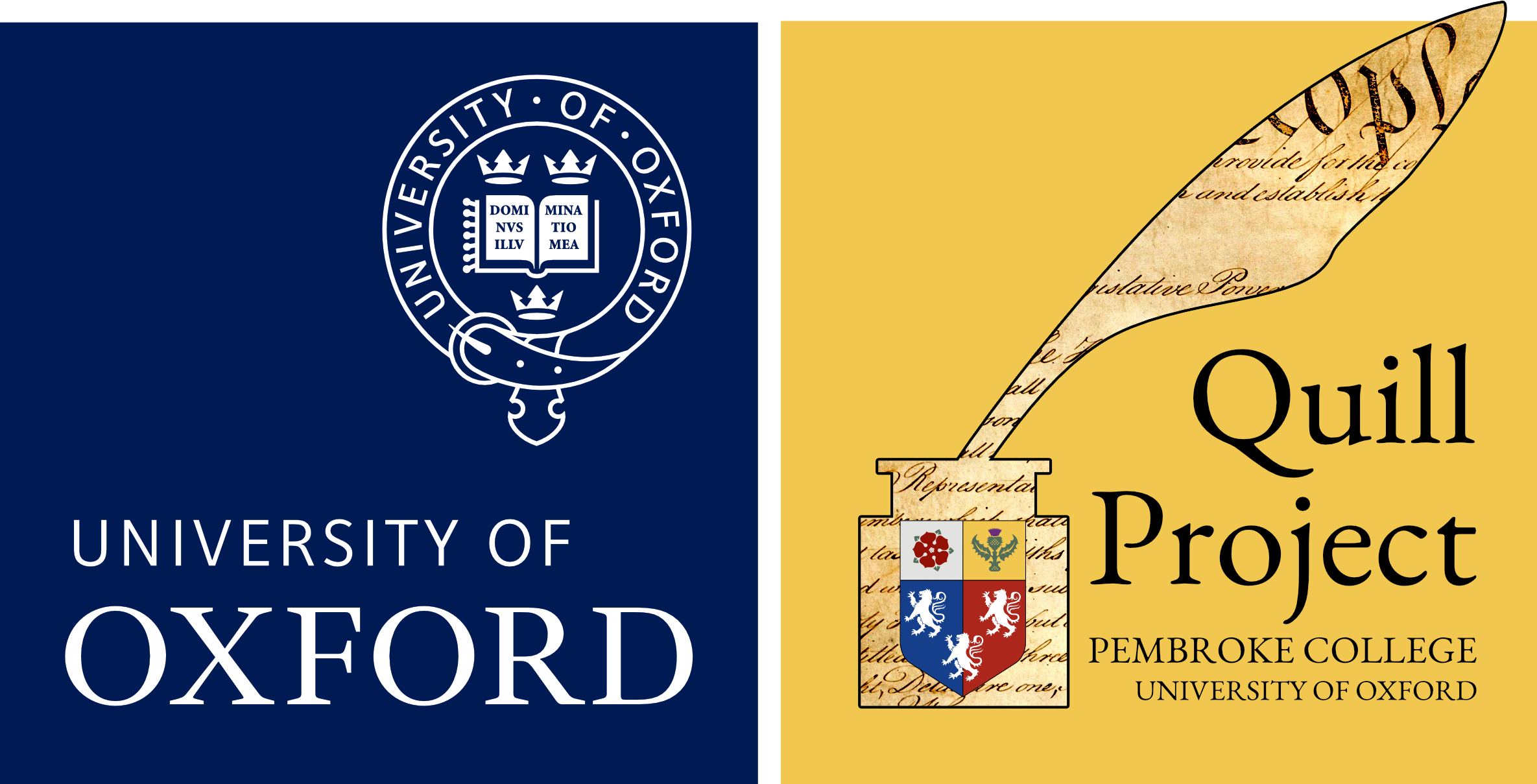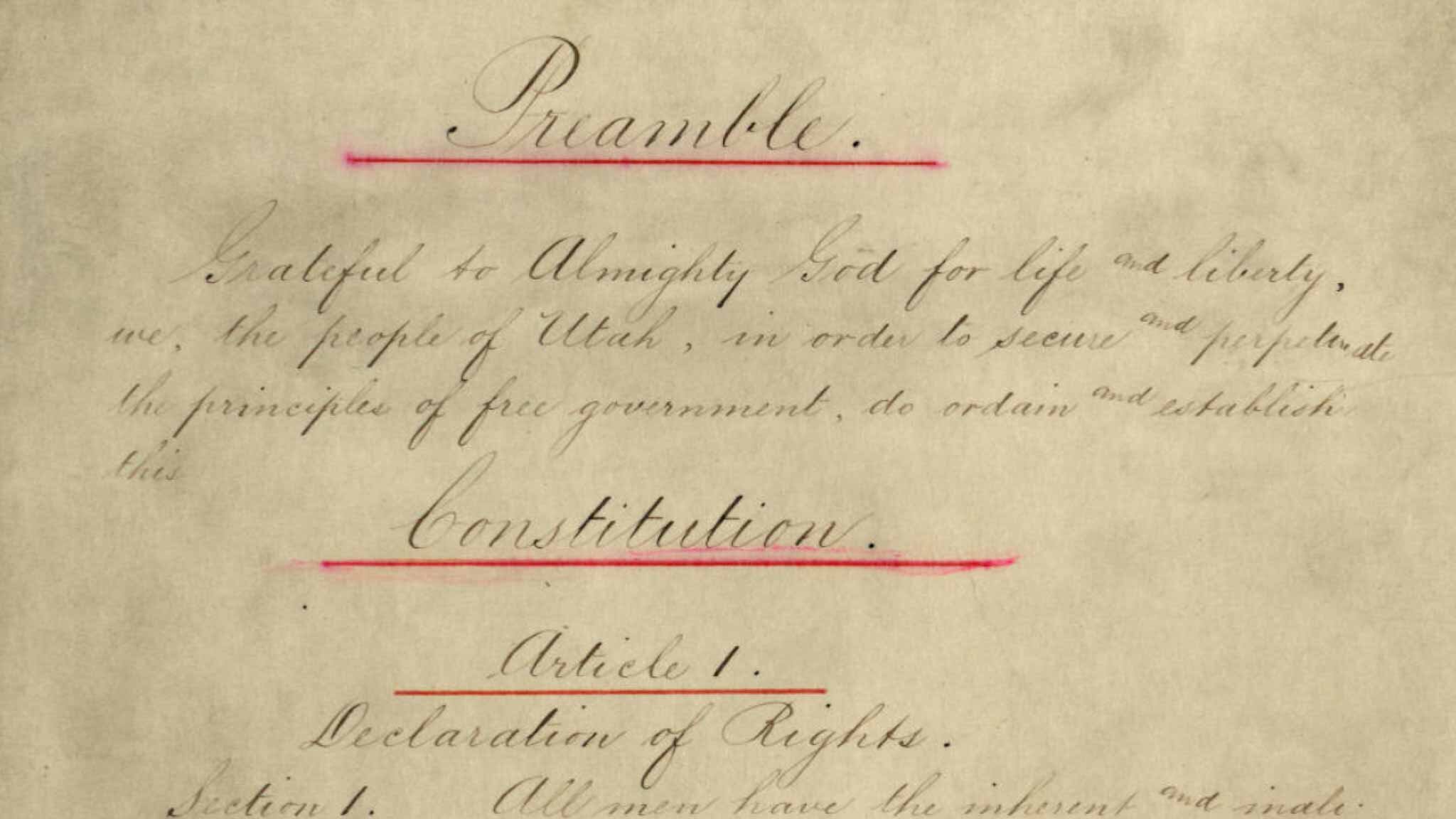> Projects
Preamble to the Constitution of the State of Utah, held in the Utah State Archives
UTAH STATE CONSTITUTION 1895
By 1895 it had become clearly established that states wishing to be admitted to the Union should hold a Constitutional Convention and submit the product of their deliberations to Congress for approval, but this was often a fraught process. By the time the Salt Lake Convention met in 1895, it was the eighth attempt to write a Constitution for the territory of the State of Deseret or Utah that would secure admission to the United States. 107 delegates met between March and May 1895 to debate many points of detail on fundamental issues concerning both individual rights and state policy. This time, their efforts proved successful and the Constitution they proposed was approved both by popular vote and Congress. Utah was admitted as a state in 1896.
The formal records of the 1895 Convention are presented by the Quill Project in the most complete form that has ever been available to members of the public. In common with our other projects, the digital tools we present enable the work of the convention to be better understood, and the context of each proposal and decision considered or made by the convention to be fully explored. Unlike the Federal Constitutional Convention, the Salt Lake Convention was an intensely public affair, and so contemporary reporting of the Convention is drawn into our model alongside the official journal and other state records.
The 1895 Convention is the first collection published by the Quill Project to cover the work of a state-level constitutional convention. Unlike the work of the 1787 Federal Convention, the work of state constitutional conventions has been little studied, and their records have typically not received the same level of organizing and editorial work. Readers may be surprised at the sheer complexity of the Salt Lake Convention. Compared to the text written by the 1787 Convention, the text produced by the 1895 Convention was far longer, and provided in detail for matters of individual right and public policy that the Federal Convention did not even discuss. It demonstrates that even within what was by then a mature Federal system, the work of writing a state constitution was not, normally, simply an exercise in replicating the work of neighbouring states. Instead, state conventions were prepared to debate issues from first principles and to reflect local concerns, as well as to borrow from and improve upon the constitutions operating in other parts of the Union.
The archival work to reconstruct the work of the Utah Constitutional Convention of 1895 involved 9 students from Utah Valley University, supervised remotely by the Quill Director over a period of more than two years, during which time they worked with the state archives, digital newspaper archives, and private archives within the state. A common feature of all state-level conventions is that they are significantly more complicated than the Federal Convention and yet the archives that relate to them have received little attention, so that the work of collating, transcribing, and editing documents is extremely arduous. Since approximately two thirds of the text agreed remains the operative constitutional law of the State of Utah, there was immediate interest in this work from the State Supreme Court, and the law clerks that advise the members of the court requested training on use of the dataset.
“The people of the land trusted us as their representatives, to present to them something that should be the palladium of their liberties, of which they with us will be proud in guarding up to the last moment of their lives.”

